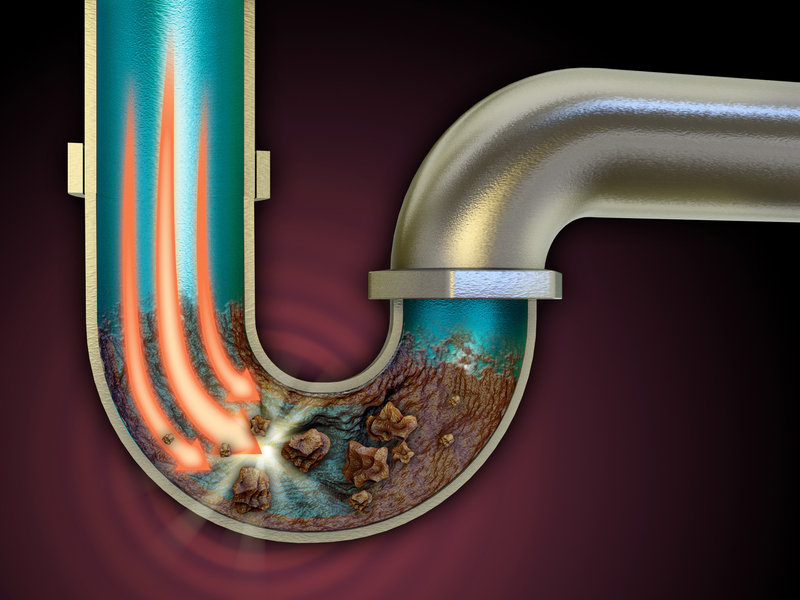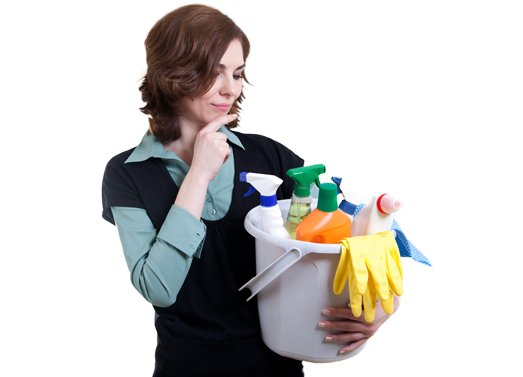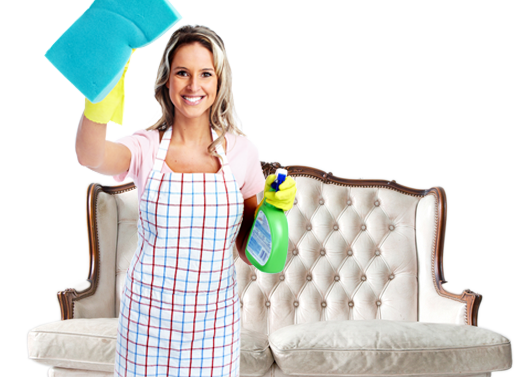Step-by-Step Guide to Efficiently Eliminate Burnt-on Stovetop Challenges
Posted on 03/09/2025
Step-by-Step Guide to Efficiently Eliminate Burnt-on Stovetop Challenges
Do you find stubborn burnt-on stains on your stovetop impossible to remove? If so, you are not alone! Burnt-on food residues, grease splatters, and scorch marks are common problems in any kitchen, regardless of how careful you are while cooking. But worry no more--this comprehensive step-by-step guide will help you efficiently eliminate burnt-on stovetop challenges and restore your cooktop's shine without damaging it.

Why is Cleaning Burnt-on Stovetop Stains Challenging?
Burnt-on messes form when food spills, sugars, or oils get overheated and stick to your stovetop surface. Over time, repeated cooking can create layers of burned residue that quickly become difficult to remove. The longer these residues remain, the more stubborn and unsightly they become.
Tackling these messes incorrectly might scratch your stovetop's surface or cause discoloration. Using the right approach not only saves you time and effort but also extends the life of your appliance.
Materials and Tools Needed for Burnt-on Stovetop Removal
Before you start tackling burnt-on stovetop buildup, gather all necessary supplies. The right tools and cleaners make the process smooth, safe, and effective.
- Soft microfiber cloths or sponges
- Non-abrasive scrubbing pads
- Baking soda
- White vinegar
- Lemon juice (optional)
- Plastic scraper or a razor blade scraper (for glass stovetops)
- Dish soap (degreasing)
- Water spray bottle
- Protective gloves
Optional: Commercial stovetop cleaner specifically designed for your stove's surface type, such as stainless steel or ceramic glass.
Step-by-Step Process to Efficiently Remove Burnt-on Stovetop Residue
Let's dive into the best practices for cleaning tough, burnt-on stovetop messes safely and efficiently.
Step 1: Ensure Safety and Prepare the Area
- Turn off all burners and allow the surface to cool completely to avoid burns or other injuries.
- Remove grates and knobs if you have a gas range. This gives you full access to the affected areas.
- Put on protective gloves to keep your hands safe from cleaning chemicals.
- Wipe away loose debris using a damp cloth or paper towel.
TIP: Place a towel under the stovetop area to catch drips and protect your counters.
Step 2: Soften the Burnt-on Residue
To efficiently eliminate burnt-on stovetop stains, you need to soften the burned particles. This makes removal much easier.
- Fill a spray bottle with equal parts water and white vinegar. Spray over the burnt-on areas generously.
- Alternatively, lay a warm, damp towel over the burnt area for about 15 minutes. The moisture and steam help loosen hard food and residue.
Vinegar's acidity is excellent at breaking down grease and food residues while being gentle on most surfaces.
Step 3: Apply a Baking Soda Paste
- Mix baking soda with a small amount of water until you get a thick paste.
- Spread the paste generously over the burnt-on marks and stains.
- Let the paste sit for 15-30 minutes. Baking soda reacts gently with residues and helps lift them from the surface.
Baking soda is a natural abrasive that won't scratch most stovetop surfaces, making it ideal for tough residues.
Step 4: Scrub Safely and Effectively
- Use a non-abrasive scrubbing pad or a soft sponge to work the paste into the stains gently in a circular motion.
- For glass or ceramic stovetops: Use a plastic scraper or razor blade at a 45-degree angle to carefully scrape up softened burnt residue. Never use metal pads or steel wool, as they can scratch glass or enamel surfaces!
- Repeat the scrubbing process as necessary for stubborn spots, adding more baking soda paste if needed.
Be patient; some stains may require multiple attempts, especially if they have been burnt-on for several weeks or months.
Step 5: Rinse and Remove Cleaner Residues
- Wipe away any remaining paste or debris using a clean damp microfiber cloth.
- Rinse the area by wiping it with another damp cloth or a sponge soaked in clean water.
- Dry the stovetop thoroughly using a soft, dry towel to prevent water spots and streaks.
Step 6: Final Polish and Prevention Tips
- For an extra shine, buff the surface with a drop of glass cleaner (safe for stovetops) or a vinegar solution.
- Replace all grates, burners, and knobs once the stovetop is completely dry.
- Lightly coat stove grates with a bit of vegetable oil to prevent food from sticking in the future.
Burnt-on Stovetop Solutions for Different Surfaces
Select a cleaning method that matches your stove's type for the best results and to avoid any damage:
- Glass or Ceramic Cooktops: Always use a plastic scraper or a cleaner specifically formulated for glass. Harsh chemicals and abrasive sponges can scratch or dull the surface.
- Stainless Steel Stovetops: Use gentle sponges and avoid bleach or chlorine. Wipe with the grain and dry immediately to avoid water spots.
- Gas Stovetops with Removable Grates: Soak grates in hot, soapy water for easier burnt-on removal, and follow up with baking soda paste if needed.
- Enamel-Coated Surfaces: Treat as you would glass tops; avoid metal scrapers or anything that could chip the coating.
Advanced Solutions for Stubborn Burnt-on Stovetop Challenges
Using Commercial Cleaners
- Look for products labeled "stovetop cleaner" or "burnt-on grease remover." Make sure they are suitable for your stovetop's material.
- Follow manufacturer instructions carefully and always test a small, inconspicuous section before widespread use.
Steam Cleaning
- If you own a handheld steam cleaner, it can be very effective in loosening and lifting burnt-on food from all stovetop types. Steam breaks down residues without harsh chemicals.
Lemon and Salt Method
- Sprinkle a thin layer of coarse salt over the burnt-on areas, then rub with a cut lemon. The salt acts as an abrasive, and the lemon juice helps break down organic stains. Wipe clean afterward.
Common Mistakes to Avoid When Cleaning Burnt-on Stovetops
Avoid these pitfalls to reduce the risk of scratching, dulling, or otherwise damaging your stovetop:
- Never use steel wool or harsh scouring pads on glass or enamel stovetops.
- Do not use oven cleaner unless specified as safe for your stovetop; many contain harsh chemicals.
- Don't skip the soaking step; tackling crusted food dry can make cleaning harder and can cause scratches.
- Never attempt to clean a hot or warm stovetop, as this increases the risk of burns and ineffective cleaning.
How to Prevent Burnt-on Messes on Your Stovetop
Effective prevention is the best way to avoid burnt-on stovetop challenges in the future:
- Clean up spills as soon as possible. The longer they linger, the harder they are to remove.
- Perform a quick daily wipe-down with a damp microfiber cloth after cooking.
- Use lids and splatter guards to reduce splash and mess during cooking.
- Season stove grates with a thin layer of oil, which keeps food from bonding to the surface.
- Inspect your stove after each use and address new stains or spills promptly.

FAQs: Efficiently Eliminate Burnt-on Stovetop Challenges
How often should I deep clean my stovetop?
For most households, a deep clean once every 1-2 weeks keeps burnt-on grime at bay. Wipe down after every use to prevent buildup.
Is baking soda safe for all stovetop surfaces?
Baking soda is gentle and non-abrasive, making it safe for most stovetops, including glass, ceramic, and steel. Avoid scrubbing excessively on delicate enamel coatings.
What is the best way to get rid of tough, black scorch marks?
Use a baking soda and vinegar paste, allow it to sit, and gently scrub with a non-abrasive pad. Persistent stains may require several applications.
Can I use bleach to clean my stovetop?
No. Bleach can corrode or stain many stovetop surfaces and should generally be avoided.
Conclusion: Achieve a Spotless Stove Without the Stress
Efficiently eliminating burnt-on stovetop challenges may seem daunting, but with patience, the right tools, and a step-by-step approach, you can restore your stovetop's shine safely. Remember:
- Soften residues before scrubbing
- Use natural abrasives like baking soda
- Employ plastic scrapers for glass tops
- Wipe down your stovetop regularly to prevent future burnt-on messes
A clean stovetop isn't just about appearances--it's also about maintaining kitchen hygiene and extending appliance lifespan. Use these best practices to efficiently eliminate burnt-on stovetop challenges and keep your kitchen sparkling week after week!
```



